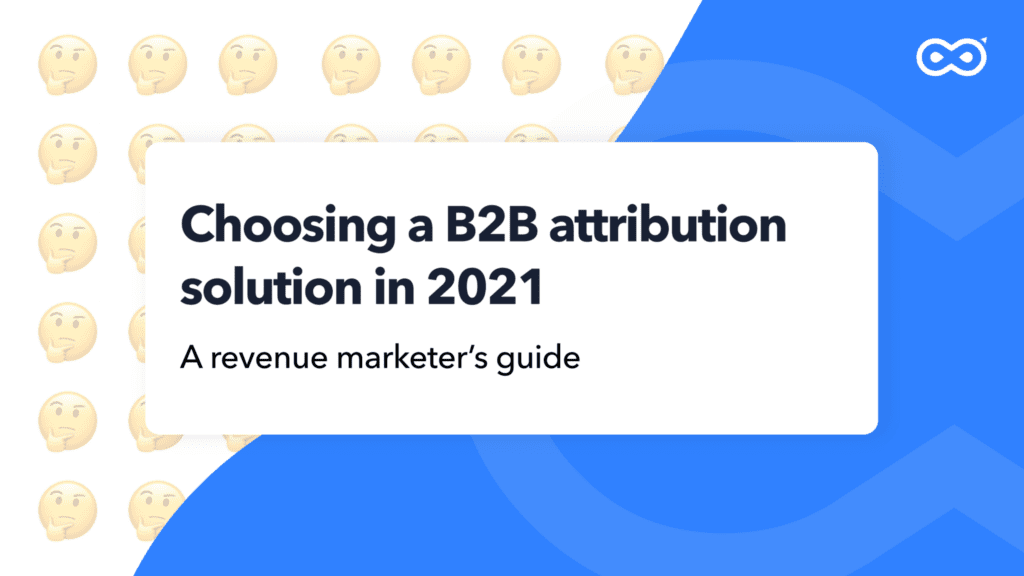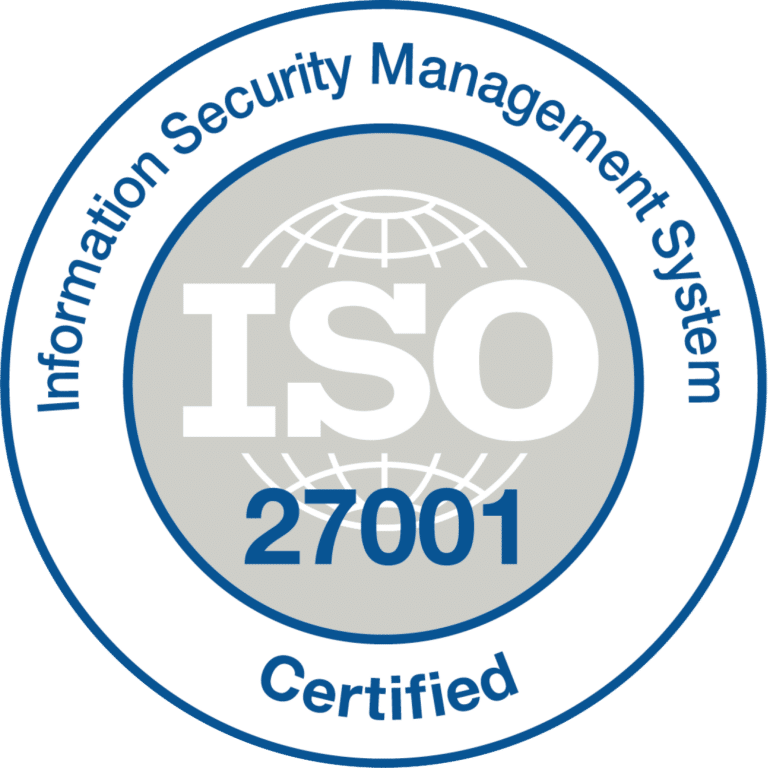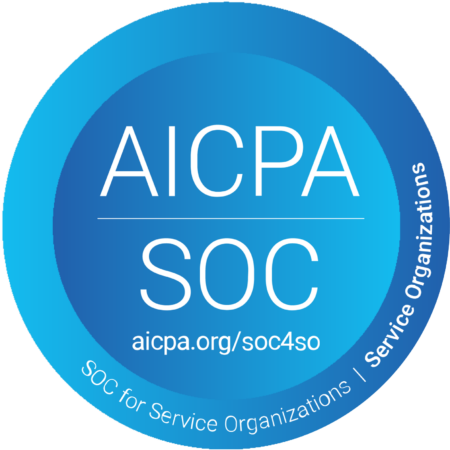While most people know that an explosion in one of the oxygen tanks derailed the famed Apollo 13 mission, it was an equipment mismatch that nearly doomed the astronauts for good.
It wasn’t long after the initial boom that Houston realized the ship was filling with carbon dioxide due to damaged filters. The deadly air was threatening to suffocate astronauts Lovell, Hayes, and Swigert. Why can’t they just grab the filters from the command module and use them on the lunar lander, wondered flight director Gene Kranz.
Turns out, the CO2 filters on the command module were square.
The ones on the lunar landing module were round.
Now, you may already see where we’re going with this – the same can happen to you when choosing a B2B attribution solution. How frustrating does it feel when you realize that the software you’re using is a complete mismatch with your business needs?
A mismatch can have negative consequences for your entire marketing operation.
That’s why it’s essential that you ask the right questions when shopping for the right tools for your team, especially when it comes to marketing attribution solutions. Your chosen platform needs to be a good match: it must align with the objectives and processes of your business so you can create successful marketing campaigns that drive revenue.
But with all of the options available, the search can feel downright overwhelming.
Where do you start?
How do you know which platform is best for your business?
To help, we’ve put together this question-by-question guide. Use these 9 questions to sort through the stack of options and find the best B2B attribution solution for your needs.
Table of Contents
Ready to find the right software to hit your goals rather than solely report on them? Let’s dive in and find the right revenue attribution match for your company.
How do you know if a B2B attribution tool is the right match for your company? Here are the 9 questions to ask
1. Is an attribution measurement solution enough for a serious revenue marketer’s needs?
“Revenue marketing” is on the rise as one of the leading strategies used by marketers and demand generation teams. While “attribution” consistently ranks as a top buzzword, it’s only a piece of the pie. Revenue marketers take a broader approach, and see attribution as a piece of the marketing puzzle. They use tech to help them do more than attribution—from creating a unified marketing data structure to forecasting future results.
As a revenue marketer, you should focus on finding a platform that enables the entire revenue marketing process. While many products can provide some style of attribution modeling solutions, a revenue marketing platform should offer:
- Data tracking and structuring: Collect, unify, and normalize your data to make sure your data in consistent and trustworthy
- Cost attribution: Integrate with marketing, sales, and financial platforms to automatically pull cost data and link it to business outcomes. This helps you measure ROI, and see how each activity contributes to pipeline and revenue.
- Forecasting and scenario planning: With the dizzying number of touchpoints involved in the B2B customer journey, you need a tool that helps you pick the ideal combination of campaign activities. The right tool helps you avoid investing in the wrong channels before you realize they’re not going to help you reach your goals.
A revenue marketing platform can help you leverage attribution data to forecast future results while actively helping you optimize your budget allocations to hit your KPIs.
2. Is it B2B or B2C focused?
The world of marketing attribution is split between two solutions: those focusing more heavily on B2C vs. those that are better suited for B2B.
B2B and B2C marketing campaigns differ in many ways, but there’s one most important to consider when you’re shopping for an attribution tool: B2B marketers contend with far longer and more complex sales cycles.
Compared to the B2B customer journey, B2C is often fairly straightforward. A gamer clicks on an in-app ad for a flashy new game and immediately downloads it. A sneakerhead scrolls through a handful of shoppable Instagram posts featuring a hot pair of shoes and decides to click over and buy. Solutions like AppsFlyer, Branch, and Singular help measure mobile interactions like app installs and the effectiveness of affiliate partnerships.
On the other hand, the B2B journey can have tens to hundreds of touchpoints. Say a customer, Bill, visits a tradeshow booth in January, receives a sequence of lead nurturing emails throughout the spring, and views a few ads on LinkedIn in the summer months, all while being approached by the Sales team, every once in a while.
But the B2B journey also includes more stakeholders influencing the buying decision. While Bill might be the main point of contact on file, it might be Bill’s manager who finally signs up for a software trial in December.
In B2B, it takes more than one stepping stone to make it across the pond—and B2B attribution platforms are more equipped to handle the longer, more layered customer journey.
3. Is the solution right for your company size?
You can also wind up with an unsuitable match if you select a solution that just isn’t right for your company size.
Each option provides different solutions varying in price, features, integrations, and customer support.
Like the fairytale “Goldilocks and the Three Bears,” you need to find an attribution product that’s just right for the size of your company. Here’s what to consider.
If you’re a mid to large-sized company…
Bigger companies have different needs than small businesses or startups. First off, they have scores—if not hundreds —of employees that need to access the software. These users might be in one or multiple different teams, and may have specific needs. Mid to large-sized companies need a platform that they can tailor to various global needs like privacy and security demands of multiple governments. They also need dedicated customer service teams with fast, reliable response rates.
If you’re a small business…
Small businesses and startups with slim marketing budgets have far different needs. They don’t need a solution as robust; they just need a bit of visibility into their paid marketing activities. They can get by with far fewer customization options and are not yet ready for revenue marketing features like the forecasting and planning tools needed by more complex marketing teams.
4. Is the attribution solution SaaS friendly?
Software-as-a-Service companies have their own distinct demands on a revenue attribution platform. Whether you’re a PLG product with a no-touch onboarding process or a high-touch enterprise software, here’s what you should be looking for as a SaaS marketing leader:
- Support for a recurrent revenue model: You need to be able to measure your marketing effectiveness far beyond a traditional “marketing” customer journey that ends with a one-time sale. LTV-based companies need to find platforms that support their unique revenue model.
- Modeling post-acquisition funnel stages: What activities help activate customers? Is there a trend underpinning why customers leave? You need to be able to measure and model what happens in the stages after initial acquisition.
- Support for SaaS unit economics: As a SaaS marketer, you work with metrics like customer lifetime value (LTV) and customer acquisition cost (CAC). Make sure your platform of choice does too.
Not every solution on the market is outfitted to meet the needs of SaaS companies. Make sure you dig into the details to make sure your chosen platform supports SaaS business models.
5. Does the tool offer full-funnel revenue attribution or just marketing attribution?
As a B2B marketer, you know that many factors influence the bottom line other than marketing spend. Depending on the structure of your company, you might need an attribution solution that integrates with more than just your marketing channels.
- Do you need to account for more detailed financial data? Freelancers, agency spends, creative fees—there are more expenses involved in marketing than just direct campaign spending.
- Do you need to include data from other departments? In many cases, you need to integrate data from other departments like sales to measure how everyone on the team contributes to your revenue goals.
Some vendors focus on showing marketing impact, while other vendors like InfiniGrow provide a more holistic picture of how revenue is generated throughout your organization.
6. What types of analyses does the tool offer?
Before you even get started in your research, start by making this very important list.
What types of metrics and reports are most important for your business?
The last thing you want is to invest in a new platform, start to set everything up, only to realize that it’s missing a few key reports most needed by your team.
For example, we’ve recently discussed a metric type that we see as extremely important, yet find completely under-used: velocity metrics. Calculations like time-to-impact (part of the top 5 planning tips!) are not commonly supported. That’s just one metric that might be crucial to your business but not available on some platforms.
That’s why it’s essential to start with your list of needs: the metrics and reports most important to you, and focus on finding a solution that’s a good match.
7. Is the solution a “web analytics”-style tool or an attribution solution?
Tools like Oribi and Google Analytics help businesses understand the behavior of their website visitors, exploring metrics like form submissions, clicks, and navigation habits.
But in most B2B SaaS companies, this isn’t enough—there is far more going on under the hood. PPC ads on Facebook or niche industry websites can initiate interest, but events like trade shows, sales collateral, or in-person sales demos can close the sale. On the marketing side, partnerships like sponsorships or PR can also significantly influence revenue. If your marketing or sales strategy includes lots of offline/off-site activity, you’ll need to consider a platform that can measure these initiatives too.
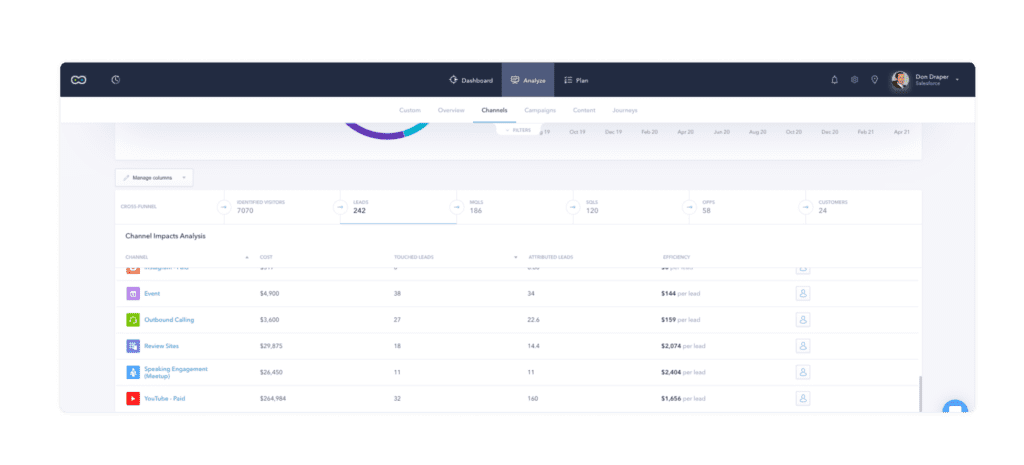
8. Does the solution offer advanced attribution models like multi-touch or machine learning?
If you’re reading this, we’ll assume you are already familiar with the differences between multi-touch and single-touch attribution.
Multi-touch models account for multi-step, cross-channel journeys. They distribute credit across multiple touchpoints of a customer journey. By splitting the credit, algorithm-based models identify each channel’s influence by assigning fractional credit. Do you use any of these popular multi-touch attribution types? (You can read up on them here!)
- Time decay attribution provides credit to touchpoints that happen closer to the time of conversion.
- Position-based attribution assigns the most significant importance to the first and last touchpoints.
- Data-driven attribution uses machine learning to assess the impact of each touchpoint in a customer’s journey. These models are more advanced, so they’re not offered by all solutions. Platforms like InfiniGrow offer a proprietary data-driven model that aims to dynamically evaluate the incremental impact of each touchpoint.
Looking for advanced or machine-learning models like those offered by InfiniGrow? Not all attribution vendors offer these models, so you should keep that in mind during your exploration.
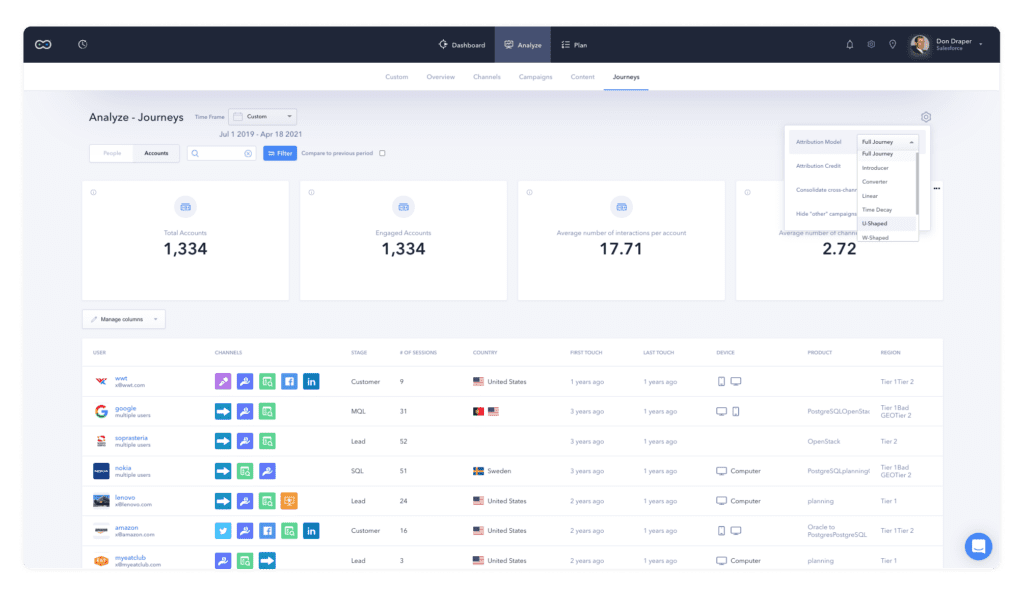
9. How flexible do you want your attribution solution to be? Do you need a lot of customization options?
You shouldn’t have to change your work methodologies to conform to how the solution works: the right tool should do the heavy lifting.
Look for an attribution solution that offers customization options that mold to your preferred data structure methods and operational processes. If you have a custom funnel structure, you need to find a platform that can support your way of doing things.
Do more than just report on your goals—find a solution that helps hit them
By now, you should have plenty of notes to help guide your search for a B2B attribution solution that’s an excellent match for your company’s needs. Attribution is a great way to measure past results, but it can’t help guide a serious revenue marketer’s plan for the future. To go beyond attribution, you need a platform that focuses on revenue marketing. This can help you ditch vanity metrics and guesswork to help you build campaigns around activities that truly drive revenue:




Voila—no more painful mismatches when it comes to a marketing attribution solution and the needs of your business! Hopefully, this step-by-step guide helped you hone in on the features and functions that are right for your company.

